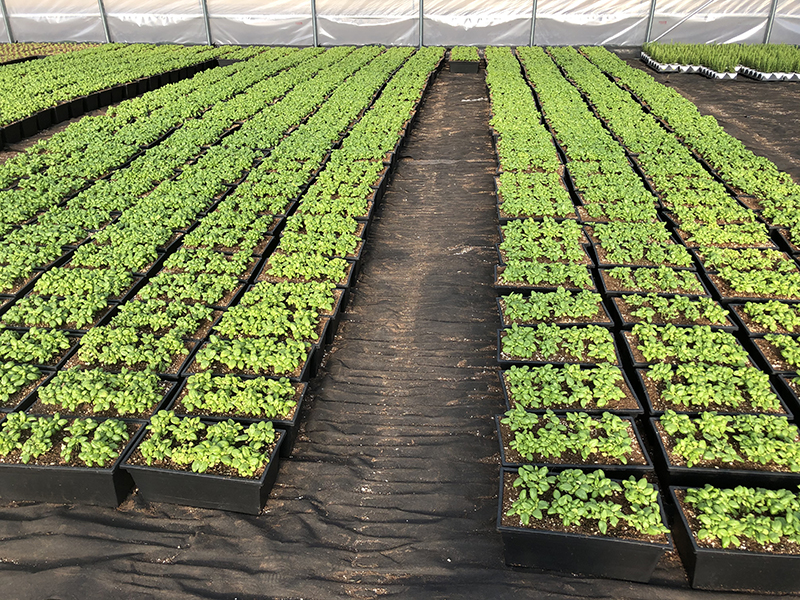Michigan State Experts Offer Tips on Improving Your Ethephon PGR Applications

Premature and non-uniform flowering of New Guinea impatiens in propagation. Photo by Roberto Lopez, MSU
Plant growth regulators (PGRs) are commonly applied as foliar sprays, substrate drenches, liner dips, or bulb, tuber, and rhizome dips/soaks. Using PGRs on greenhouse crops assists growers in producing uniform and compact plants that can be easily packaged, shipped, and marketed to consumers.
According to Roberto Lopez and Kellie Walters in the Michigan State University Department of Horticulture, the majority of PGRs (e.g., ancymidol, chlormequat chloride, daminozide, flurprimidol, paclobutrazol, or uniconazole) used by greenhouse growers suppress stem elongation (extension growth) by inhibiting the biosynthesis of gibberellins (GAs), which are plant hormones that regulate growth and stem elongation.
In contrast, ethephon (2-chloroethyl; phosphonic acid) is a PGR that has multiple uses as it releases ethylene — another plant hormone responsible for ripening and senescence — upon application. It can be used to suppress stem elongation; increase stem diameter; reduce apical dominance, causing an increase in branching and lateral growth; and induce abscission (abortion) of flowers and flower buds.
An article from Lopez and Walters on the Michigan State University website offers advice on how to optimize your ethephon spray applications by monitoring and adjusting two often-overlooked cultural and environmental factors that can influence efficacy: water alkalinity and pH, and air temperature at application.
Check out the full article here.










